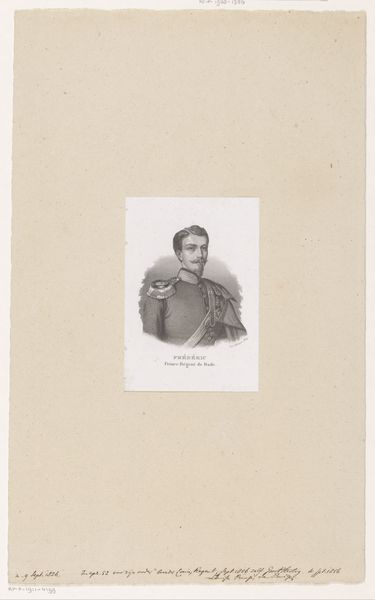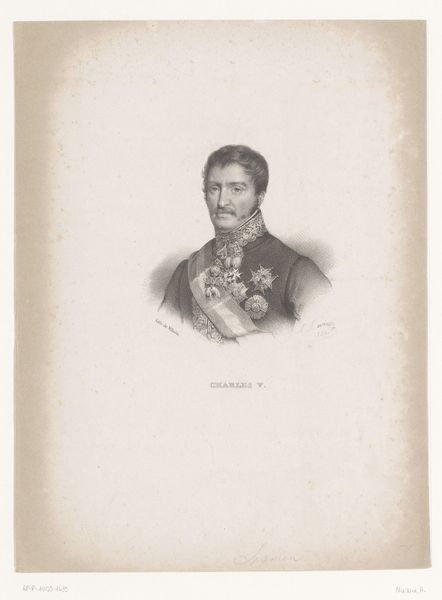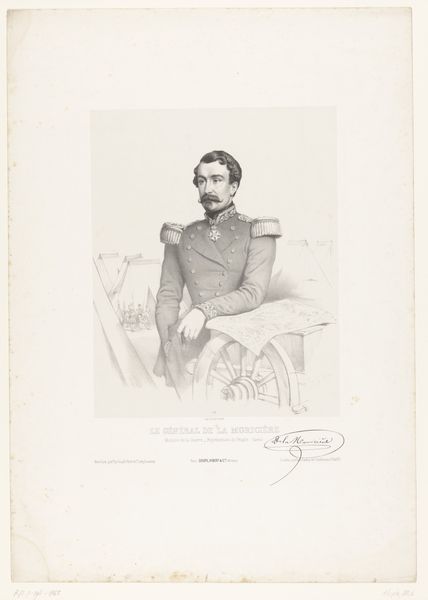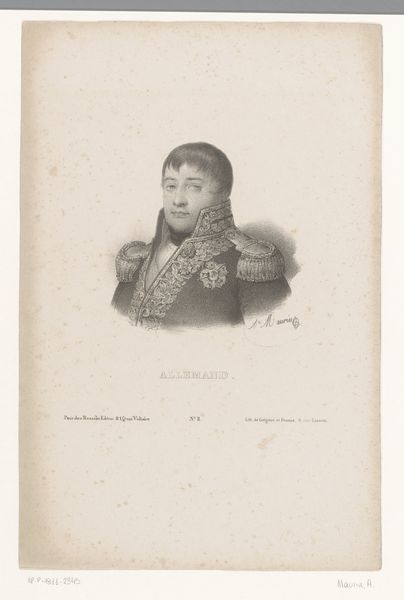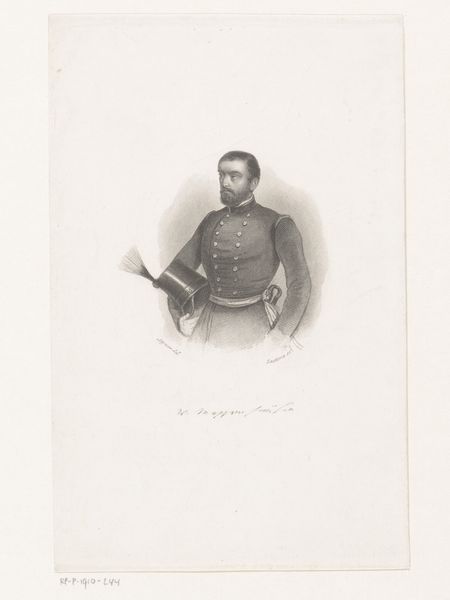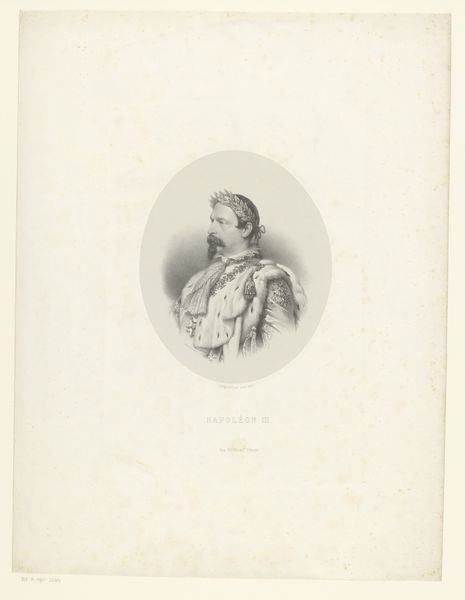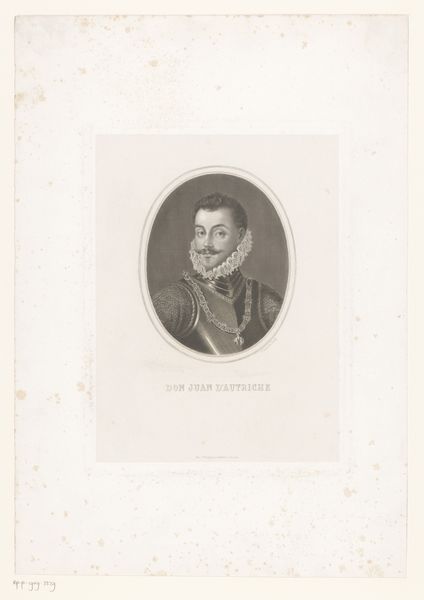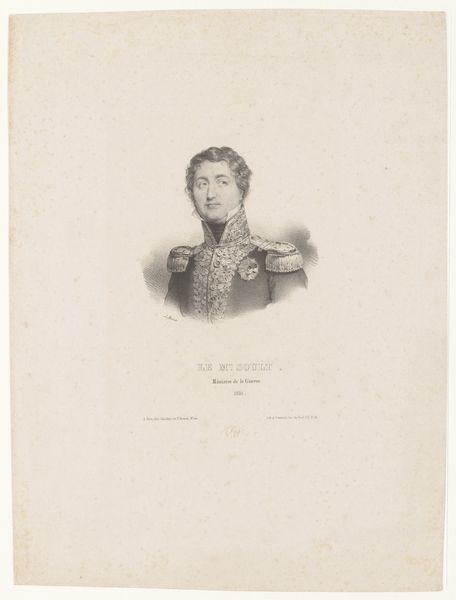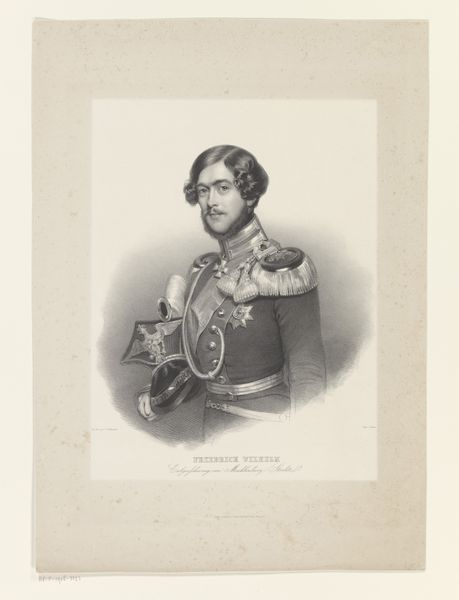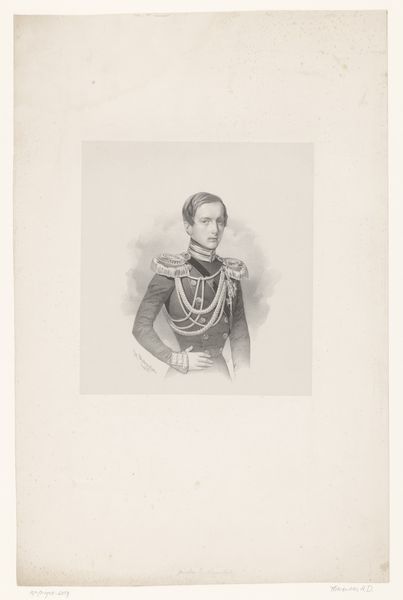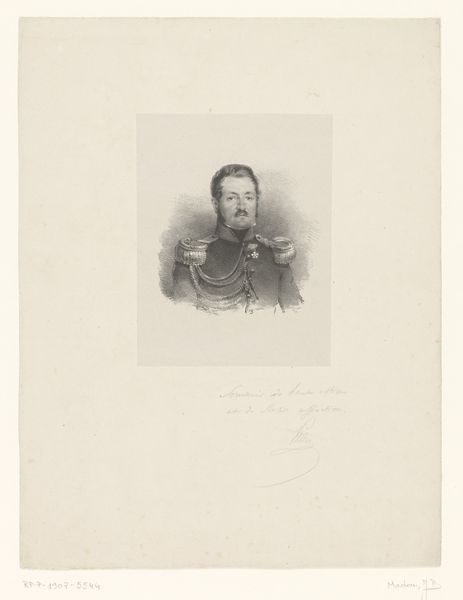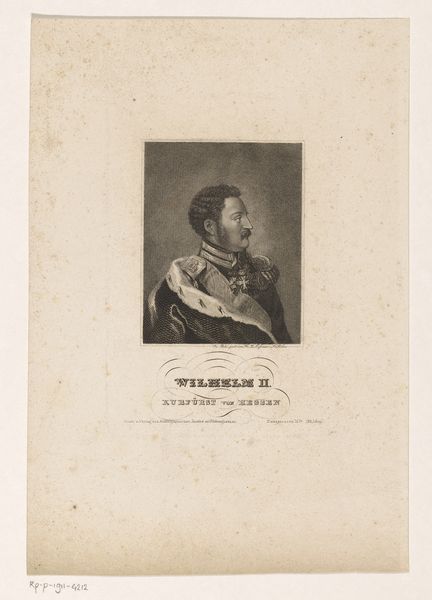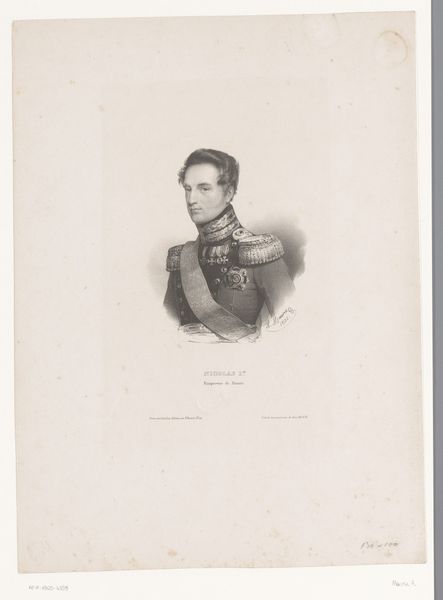
drawing, pencil, graphite
#
portrait
#
drawing
#
pencil drawing
#
romanticism
#
pencil
#
graphite
#
academic-art
#
realism
Dimensions: height 362 mm, width 267 mm
Copyright: Rijks Museum: Open Domain
Editor: So this is "Portret van Carlos María Isidro Benito de Borbón y Borbón-Parma" by Nicolas Maurin, done in 1835 using pencil and graphite. It feels like a very formal portrait, almost… distant. All those medals seem to add a weight to the image. What stands out to you in this piece? Curator: Indeed. What I see is a carefully constructed representation of power, reliant on symbols steeped in history. Notice the layering: the meticulously rendered face, revealing perhaps a hint of melancholy, overlain with the regalia. These medals aren't merely decorative; they're shorthand for lineage, loyalty, and the weight of dynastic expectation. They speak to a cultural memory carefully curated and projected. Editor: So, beyond just being decorative, each element signifies something about his identity and position? Curator: Precisely! Think of how the artist uses light and shadow to highlight the face, then diffuses it across the symbols of power. It directs our gaze, and also invites us to question: What aspects of himself did Carlos wish to convey, and how did he want to be remembered? What’s present? What is carefully omitted? Consider what's implied by those omissions. Editor: That makes me think about how portraits like this are actively shaping someone’s legacy. It’s not just a likeness. Curator: Not at all. These choices reflect not just artistic conventions but deliberate acts of self-fashioning in the face of potentially turbulent times. Symbols become tools of cultural preservation, hinting at narratives far grander and older than any single individual. It reminds us of how constructed "reality" can be. Editor: It’s amazing how much can be communicated through these visual cues. I’ll definitely look at portraits differently now.
Comments
No comments
Be the first to comment and join the conversation on the ultimate creative platform.
